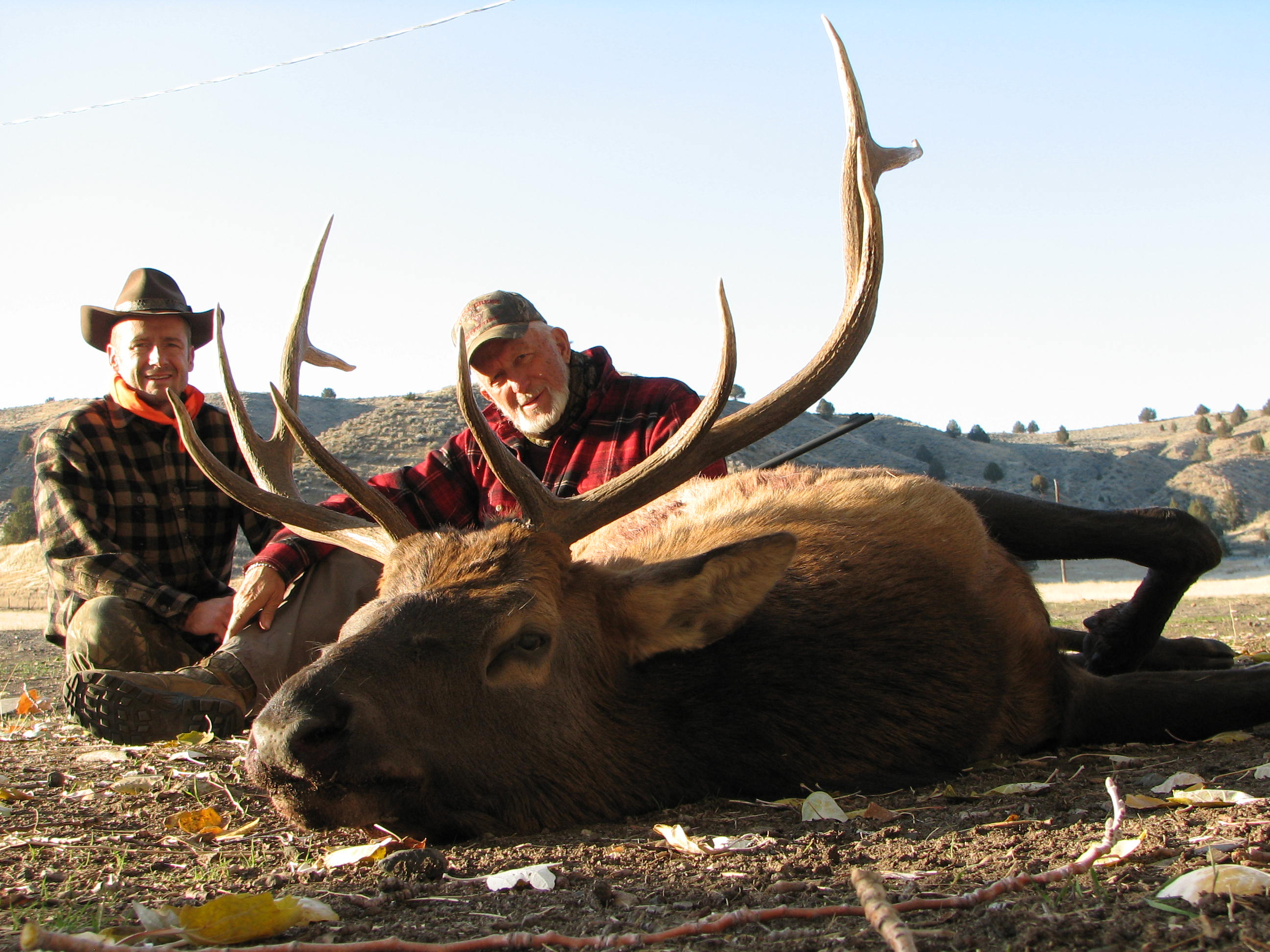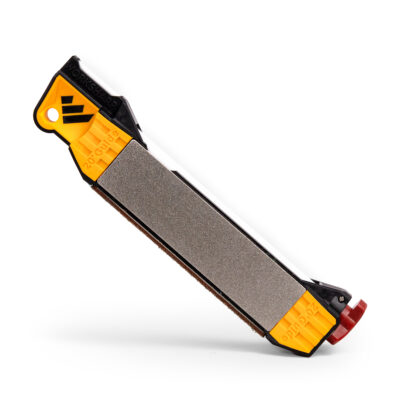Your cart is currently empty!

Striking Gold In Elk Season
The two Californians cornered me to ask what rifle I was carrying. “A thirty-ought-six,” I told them. “A Ruger bolt action with a Leupold Mark 4 with the ART reticle.” They wrinkled their noses.
“Really? I would have thought an outdoor writer would have had something a little more, well, interesting than a 30-06.”
It seemed to me that the 30-06, with more than a hundred years of history was about as interesting as they come. Loaded with 165-grain Nosler AccuBonds, it was certainly a reliable performer.
The Californians turned to my hunting partner. “Bill, what did you bring on this hunt?” Bill Moe produced his pre-1964 Winchester Model 70, a rifle he had recently restored with a powder coat finish and new oil on the walnut stock.
“My old 270 Winchester,” he said, with obvious pride in the well-used gun. It had been 25 years since Bill had hunted elk and he was happy to be back in the game.
The brows of the Californians knit in worry. A 270 Winchester and a 30-06. They were in the company of unimaginative hunters, maybe worse. They took the opportunity to admonish the Oregonians that the 270 and the 30-06 were really substandard in these days of super high velocity, enhanced metallurgy and engineering. Then they opened their gun cases to demonstrate what the enlightened, highbrow hunter carries on a high desert elk hunt.
The guns were impressive, straight-throw bolt actions with fine-figured walnut stocks and engraved, inlaid actions, both sporting European optics and chambered for 300 Winchester Magnum. The cases were equally luxuriant, lined with velvet to cradle each piece.
After fondling the guns and extolling their virtues, the Californians then reported to their guide, also from California, that one of the other hunters in camp had deigned to bring a 270. The guide suitably furrowed his eyebrows and told Bill that every animal he had ever lost had been shot with “one of those.” Furthermore, it was the last gun he wanted to see in camp. It was almost bad luck to have a 270 on an elk hunt. We received our lecture with good grace and laid out our boots and packs for the next day.
Work Sharp Offers A Knife sharpener for everyone – no matter your sharpening needs
-
Knife & Tool Sharpener Mk.2™
 $109.95
$109.95 -
Guided Field Sharpener
 $39.95
$39.95
It was late October and our tags were good for either-sex elk. This ranch in the Burnt River range was uniquely situated at the transition between pine forest and sagebrush country. With water, alfalfa and orchard grass, there was feed that could draw herds out of the timber as the season progressed.
Day one, our guide, Steve, led us to a mountain saddle. In the evening, we stalked a small herd of cows in a dark canyon and backed out when it was apparent there were no bulls in the group. Day two, we teamed up to hunt a series of long canyons and California No. 1 missed a shot at a yearling elk. On the morning of day three, our enthusiasm had worn down to a fine edge. We had hunted most of the ranch and were now going to focus on the dry side.
There comes a tipping point. You can throw up your hands and go home or you can come at the problem from another angle. In the Burnt River country you can see where dreams made it to the tipping point. Here they took gold by pick, by pan and by water.
The names that prospectors gave the features of the land speak of hope, hard work and homesickness: Texas Butte, California Mountain, Dixie Creek, Eldorado Pass, Gold Ridge.
A hanging tree, a weathered ponderosa pine, bears mute testimony to frontier justice. A broken down two-room house of ill-repute stands where lonely miners were separated from their metal. The towns that sprang up in the rush for gold are all but gone – only foundations and chimneys remain. They all reached a tipping point – the place where people made the decision to stick it out or head home. Some went broke, others made a living, a few made fortunes.
There is still gold in those mountains. You can see it in the groves of October’s aspens in the heads of the draws. A few miners work claims for color and shine still shows in pans washed in the creeks.
Our problem was that we were two-and-a-half days into a five-day hunt and we hadn’t located the main elk herd yet. I had passed up a shot at a cow elk on the first day. Since then we’d seen several young mule deer bucks, blue grouse, wild turkeys and Hungarian partridge. No more elk. It was time to try something different.
The elk had gathered into large groups, according to one cowboy we spoke to. It was up to us to find them. We looked for elk on the edges. The edge of meadows, where canyons rose to saddles, where tree lines gave way to alpine, where lava flow ran into timber, where mountain mahogany met the timberline. Mostly, we looked for the tipping point.
“Coyote!” Bill said. Steve slammed on the brakes and I rolled out of the truck, tipped the bipod into play and prone, found the coyote bouncing through the sage. He was over a hundred yards away, about to crest the hill when he stopped and risked a look back. My crosshair drifted into his vitals and I took two-and-a-half pounds of pressure out of the trigger. And tipped him over.
There is a feeling among some hunters that you don’t shoot the coyote because you might spook the elk. I’ve long believed that you shoot the coyote to deserve the chance at the elk. Regardless, I knew we’d found our tipping point.
Ten minutes later we turned a bend in the road and stopped. Peering through my binocular, I scanned the ridgeline. We found them against the sky. Three cow elk stood sky-lined over 800 yards away. Steve backed the truck around the hill, out of sight and parked. We climbed to the top of the ridge and, on our bellies, glassed the skyline. Elk were strung for hundreds of yards in both directions, in bands of eight to ten in each of the draws above us. A big bull strutted back and forth among his cows. Several smaller bulls orbited, moving in and out of the mountain mahogany and aspen thickets. A bugle drifted from the timber. Two hours of daylight and time to make a play.
The wind was not in our favor. We’d have to make the approach from the west and the breeze would carry our scent straight to the elk. There were some beeves in the way and we let them ease off before we slipped up the hill. More elk were on the hill in front of us. We backed down the hill and went further west up a canyon and over the top. Light was fading fast.
The next canyon had water. With the cold air moving down the mountain our scent would be swept downhill instead of into the herd. I crossed the creek and looked back. Steve was right behind me. On top, the wind was blowing to the elk. I took out a bottle of elk scent and sprayed a cloud to cover our human odor. Sky-lined now, I tipped my hat off and skinned on my belly through the sage. Two elk were on the far hillside. Both quartered away, looking uphill. I signed to Steve for the range.“Three-twelve,” he whispered, between ragged breaths.
Behind the rifle, I eased into the shade of a mountain mahogany and took a rest on a low-hanging limb. The crosshair bounced with my pulse and settled for the high hold. I squeezed and rocked with the recoil. 40 elk streamed over the hill toward us, a five-point in the lead, followed by dozens of cows and more bulls. Daylight was gone by the time we made it to where the elk had been. My cow elk traveled 85 yards and came to rest on a hill just above the road.
It was the next morning when I returned. Temperatures in the 20s kept the meat from spoiling overnight. Before I began the good hard work of carving the meat from the animal, I sharpened my knife. Then I remembered my hat. I climbed back up the hill to get my hat and saw the herd again. Fourteen animals fed on the hillside above me, about 200 yards away. Two nice bulls. I took some pictures and continued on my way. Less than five minutes later, I heard the boom of Bill’s Winchester. Bill and Steve had been stalking that herd while I was taking their pictures.
Moments later, we heard the boom of another rifle. California No. 2 had taken a shot. Then we heard another and another. That went on the rest of the day as the guide and his client followed their elk. They caught up that evening after going through most of a box of cartridges.
We gathered for dinner late that evening and basked in the glow of our success. The Californians were uncharacteristically quiet. Bill didn’t need much of an opening, but he waited till dessert to ask his question. “So how did those fancy rifles work out for you? Did you see that bull I got? I guess I did okay with my old 270 Winchester after all. What do you think?”
Written by Pro Staff Gary Lewis.
To order a signed copy of Hunting Oregon, send $24.80 (includes shipping) to Gary Lewis Outdoors, PO Box 1364, Bend, OR 97709 or visit www.GaryLewisOutdoors.com.






